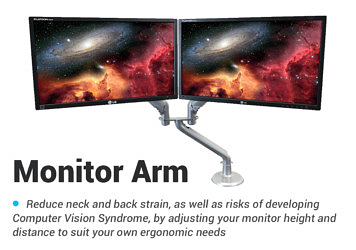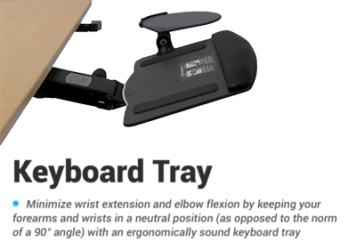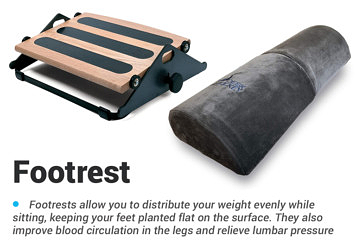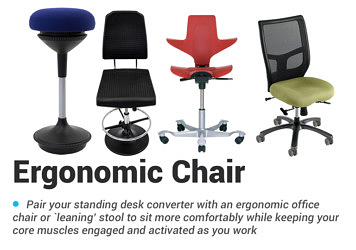IKEA IDÅSEN Standing Desk Underframe Review
- Forensic Review
Like most reviews sites, our editorial staff and laboratory testing expenses are partially offset by earning small commissions (at no cost to you) when you purchase something through those links. Learn More

Overview
| Review Summary |
There are a lot of IKEA fans out there, mostly because you can generally find decent looking stuff for relatively cheap, if you’re willing to tackle a complicated, messy assembly job on your own. What IKEA products are NOT known for is durability, especially when electromechanical parts are involved. IKEA has had a long and sordid history in the standing desk category, offering some of the cheapest standing desks in the market, commensurate with a shockingly failure rate and even out-of-the-box failure. While the warranty is top notch the hassle of dealing with a component failure, with disassembly, trips to the store and re-assembly, are just not worth it. Unless you own other Idasen furniture you’re trying to match there isn’t really a good reason to choose this base for your DIY standing desk over other better options for the money. |
|---|---|
| Best Use |
If you want a sit-stand desk and already own other IKEA Idasen line furniture you want to match, you can buy this base and add your own top rather than settle for very small set of desktop options that IKEA sells for this desk line. |
| MSRP / List Price |
$449 plus shipping |
| Street Price | Scan for available discount deals |
| Shipping |
Shipping costs vary by how far you are from the nearest IKEA warehouse that actually stocks the product, or of course you can pick it up in person – but check first if they stock it because not all locations do. |
| Warranty |
Ten years, however the warranty terms are not published on the IKEA website, the assembly documentation nor the user instruction manual, so it is unclear what is actually covered. |
| Lift Type |
Electric |
| Transit Speed |
1.5″ per second |
| Controller |
Linak DPG with Bluetooth |
| Sizes Available |
The frame itself is 27.5″ x 57.5″. IKEA recommends it for use with desktop widths of 47.5″ to 63.5″ (there are only a few width settings you can choose when assembling the crossbar) and depth of 27.5″ to 31.5″. |
| Colors Available |
Beige or Dark Gray |
| Adjustment Range |
Height range: 23.625″-48.875″ |
| Weight Capacity |
165 lbs |
| ANSI/BIFMA Certified |
No |
| NEAT™ Certified by Mayo Clinic |
No |
| Competition | Compare to Other DIY Standing Desk Frames |
| User Reviews |
See IKEA website or below |
| Where to buy |
Buy on Amazon |
Rating
| Stability | |
|---|---|
| Reliability | |
| Customer Experience | |
| Quality and Aesthetics | |
| Innovation | |
| Value | |
| Positives | Made in Scandinavia with components from highly reputable vendors, offered with a ten year warranty. One of the less expensive bases to have a Bluetooth-sync'd app for controlling from your iPhone or Android. Includes mesh net for shoring up your loose cables. Triangular tubing attaching the bottom actuator tubes to the desk's feet add longitudinal stability to the frame. |
| Negatives | Like the IKEA Bekant, the motors are highly underpowered for all but the lightest, most balanced loads - all in the name of cost reduction. Assembly is not trivial, and the aesthetic design is bulky and dull. Triangular tubing bracing the legs create an obstruction to kneecaps when swinging your legs to get out of a swiveling office chair. There are equally priced and even lower cost standalone frames that you can buy with much greater lift capacity. |
Bottom Line
The DIY crowd loves IKEA for what it is. Often the fastest and cheapest way to get started, when quality, durability and state-of-the-art tech is not the primary purchasing consideration. If the idea of sitting down to an hour-long project of sorting through bags of bolts and screws does not intimidate you, then building a standing desk atop an IKEA standing desk underframe might seem an attractive path, but be sure to go in with your eyes wide open.
IKEA’s less-than-stellar track record in the standing desk arena
Starting with the now-defunct Galant standing desk IKEA has left a trail of tears in its endeavor to create low-cost electric standing desks. Let’s face it, making precision electromechanical devices are not the core competency of this company. Regardless, they keep trying, and in fact because of their immense global retail footprint they own a significant share of the $2.5B standing desk business today—albeit pretty much limited to the budget-minded, DIY-capable home office buyer.
IKEA’s mainstay standing desk product today is the Bekant line, which last time we checked had an atrocious customer satisfaction rating of only 1.8 stars on IKEA’s own website. We encourage you to read our IKEA Bekant Standing Desk Review and scroll down to the many user comments left by Bekant users to get a flavor for the problems with the durability and quality of this product. Based on several years of consistently horrific user reviews and our own staff experts’ assessment of the technology the Bekant has earned one of the few 1-star reviews we’ve ever given an office fitness product.
Will the Idasen standing desk chance the course of IKEA’s history with low-quality standing desks?
When we’re talking about electric standing desks it’s the linear actuators that move the desk up and down that count the most. IKEA is of course a Swedish company, and for the Bekant line they went to ROL ERGO, the largest and best known Swedish manufacturer of linear actuators, to make it a super-economized version of their otherwise premium-brand lifting columns. In short, cutting back on the motor strength and power supply voltage to the extent they did in order to meet IKEA’s cost targets left them with a very high DOA and premature field failure rate that has besmirched the OEM component manufacturer’s stellar reputation.
For the Idasen sit-stand desk, IKEA merchandisers drove over the bridge into Denmark to talk to their premier linear actuator manufacturer, Linak, to do the same. While Linak also makes the ultra-reliable lifting actuators for top-tier standing desk manufacturers like Workrite and iMovR, this version created just for IKEA has a wimpy 165 lb lift capacity. While that sounds like a lot, after you add the weight of the desktop and factor in the side-loading stresses of a typically unbalanced weight atop this T-frame base, it’s a formula for premature motor failure and wear-and-tear on the precision “glides” that separate the lifting column’s tube segments. Read our experts’ primer on Interpreting Standing Desk Base Lift Ratings for these all-important details.
So the track record doesn’t bode well because fundamentally this desk base is made as cheaply as it can possibly be made, only in Europe, not in China. Weak power supplies and motor components will not withstand the test of time regardless of the reputation of the logo you’ll find on some of the parts in either of these IKEA desks. But let’s take a deeper dive into some of the specific differences between the two IKEA electric standing desk models.
Comparing Idasen to Bekant
The first thing that literally meets the eye is the Idasen frame’s distinctive Jon Karlsson design. The best reason to even consider this base is if you already own a bunch of other Idasen collection furniture furniture and you want your new standing desk to match, but you don’t like the laughably limited number of desktop size and color options that IKEA offers in their full Idasen desk systems. Otherwise the drab beige and dark gray color schemes and the super-thick tubing on the Idasen’s under frame design are likely to be a turn-off to most American buyers. There’s a reason that 99% of standing desk manufacturers offer black, silver and white as their top three colors.
The one positive of the bulky-tube design is that it adds forward-and-back stability to the bottom of the desk and lowers its center of gravity. This is where a lot of standing desk frames like the Jiecang bases used in UpLift’s desks are often weakest, where you can literally see the flex in their lightweight feet as your rock the table back and forth. The downside, however (besides visual ugliness) is that if you’re like most people and you swing your legs out as you swivel out from your swiveling office chair, you’re more likely to run into the desk legs. That’s why most commercial-grade standing desks use a cantilevered “C-leg” frame to remove this obstacle to fast egress from your desk.
The frame itself is much more robust than the Bekant’s, with a three-piece metal crossbar connecting the two lifting columns and providing more securing points for the desktop. This probably won’t matter much to lateral stability due to the three-part nature of the crossbar, but it is again something that adds more weight to the desk – and that’s generally a good thing for stability. Unlike other crossbars, though, this crossbar only has a few fixed points – you can’t slide it in and out to perfectly place the legs where you want them. IKEA’s supposition is that this frame will only be used with two desktop sizes: 63.5″ x 31.5″ and 47.5″ x 27.5″. To be sure, you can hack some points in between but the Idasen’s design isn’t as flexible as most every other standing desk base frame we’ve reviewed.
The coolest difference between the Idasen’s and the Bekant’s design, however, is in the hand controller. The Bekant’s controller is a no-frills up and down button affair while the Idasen utilizes the Linak DPG1M “height control paddle” with Bluetooth. This is a lower-cost, defeatured version of the DPG1C paddle you’ll find on desks like the iMovR Lander, for example, with no hi-res, multi-colored display readout but the same double-tap commands to change from sitting to standing preset heights.
Download the Linak demo app and you can impress your friends by controlling your desk height from your phone. For most DIY builders this is nothing more than a gimmick. Where the Bluetooth sync comes in most handy is in shared-desk scenarios where each user can carry around their favorite height settings on their phone and sync up with the desk when they take over that workstation. While the Idasen’s user manual says almost nothing about the app we do recommend downloading it and playing with it.
Is the Ten Year Warranty all that it’s cracked up to be?
We’d like to tell you that we’ve read the terms and conditions of the warranty, as the IKEA website suggests, but it is sadly nowhere to be found, not even in the assembly instructions or user manual for the Idasen standup desk. However, these two things are most likely a given: A) IKEA will never challenge a return or warranty exchange for any reason, and B) you have to be okay with the hassle factor of disassembling your desk, taking the dead leg to the entire desk back to IKEA, or boxing it up in original packaging and shipping it back to IKEA, and then re-assembling your desk again. We probably don’t need to tell you the astronomical retail cost of shipping two boxes that weigh 65 lbs.
The point is a ten year warranty is worthless if your desk is actually likely to fail within those ten years, which our experts universally agree it will likely do so prematurely, just like the Bekant has proven to over time. And IKEA has never done anything to remedy this despite the bad editorial reviews and awful user reviews on their own site. IKEA considers the returns and exchanges just part of the cost of doing business. But for you, the buyer, you have to decide if saving a few bucks is worth the potential disruption to your life and work down the road. Especially when a little research will find you a much better base for the money, free shipping included.
Bottom Line
We’ll say it plainly. There are other bases that we’ve lab tested in our round-up of standing desk base kit reviews that cost the same or even less than the Idasen that’ll last much longer, look better and be more versatile in terms of desktop sizes they’ll accommodate, and actually likely to outlast their ten year warranties. So unless you’re really just trying to match your other Idasen collection furniture pieces we don’t have much to recommend about this standing desk underframe versus options from UpLift or iMovR.
Need help figuring out the best standing desk base for your DIY project? Contact us by live chat in the window to the lower right of your screen.
Please subscribe to our free Office Fitness Newsletter to stay abreast of all the latest reviews.






0 Comments
Leave a response >